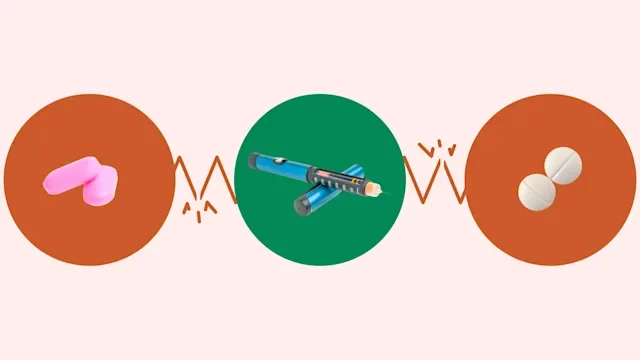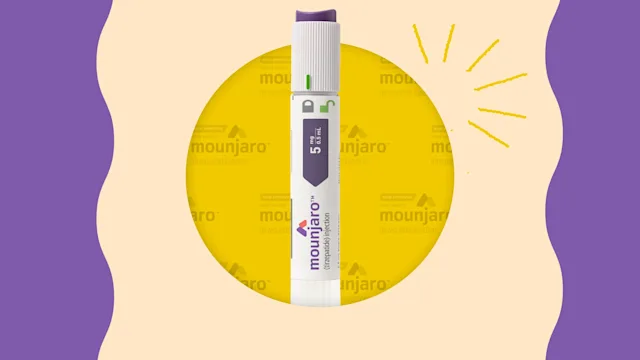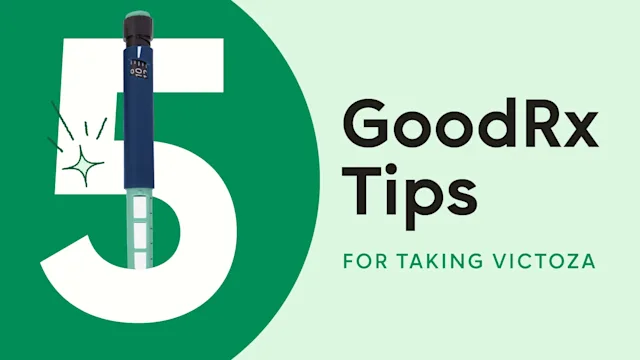Key takeaways:
Following a diabetes diet helps you spend more time in your glucose target range. Fewer highs and lows can give you more energy and can help you avoid diabetes-related complications.
Good foods for diabetes include minimally processed whole foods, fiber-rich fruits and vegetables, lean proteins, healthy fats, and moderate amounts of complex carbohydrates.
Other tips include monitoring how your blood glucose responds to different foods, eating regularly, and working with a nutritionist.
Diabetes is a chronic condition that affects millions of people in the U.S. Of the more than 30 million individuals who have diabetes, about 95% have Type 2 diabetes, making it the most common type.
No matter which type of diabetes you have, eating a balanced, nutritious diet can help keep your blood glucose (sugar) levels within your target range. This helps you feel your best and lowers your risk of diabetes-related health complications. Let’s dig in.
What is a diabetes diet?
A diabetes diet supports your health needs while helping you spend more time in your target glucose range. It also allows you to enjoy eating and feel good in your body and mind.
A diabetes diet is similar to other healthy eating plans you may know. In fact, many of the principles of healthy eating are the same.
A healthy diabetes diet prioritizes:
Complex carbohydrates and whole grains: whole-grain bread or pasta, quinoa, brown or wild rice, oats, seeded crackers, chia seeds, and flax seeds
Lean protein: skinless turkey or chicken, fish, beans, tofu, eggs, and plain yogurt
Fiber from fresh or frozen non-starchy vegetables: broccoli, Brussels sprouts, leafy greens (like kale and spinach), green beans, asparagus, and berries
Healthy fats: nuts, avocados, plant and seed oils, and oily fish
Simple drinks: water, unsweetened carbonated water, and unsweetened teas and coffee
How to find the right diabetes diet for you
The experts at the American Diabetes Association (ADA) emphasize the importance of finding the diabetes diet that works for you in their Nutrition Consensus Report. They recommend:
Individualized eating plans: There isn’t a “one-size-fits-all” diabetes diet. Work with a registered dietitian to figure out the best amounts of carbohydrates, proteins, and fats for you.
Choice: You need choice and variety. Your eating plan should fit your lifestyle, whether you follow a vegetarian, pescatarian, Mediterranean, or other type of diet.
Realistic goals: Restrictive diets that don’t fit in with your lifestyle won’t work long term. To make lasting changes, set realistic goals.
After you learn the building blocks of your diet, the ADA’s Food Hub is a great resource. You can find diabetes-friendly recipes, plan meals, and make a grocery list all in one place. You can also check with a registered dietitian or diabetes educator for help.
Diabetes plate method: Learn this simple method for building diabetes-friendly meals that help manage your glucose levels and meet your nutritional needs.
Is it safe to drink alcohol with diabetes? Drinking alcohol comes with unique risks if you have diabetes. See these tips for how to stay safe if you decide to drink.
What are the best drinks for diabetes? Take a look at some drinks that won’t raise your blood sugar levels and learn which ones to avoid.
Best foods for people with diabetes
If you have diabetes, you can still enjoy a variety of foods without giving up everything you love. That said, some food choices are smarter than others. In turn, they’ll make it easier to manage your diabetes and glucose levels.
The best foods for people with diabetes fall into four groups:
Complex carbohydrates
Fiber
Lean protein
Healthy fats
- GlucophageMetformin
- RiometMetformin
- Glucophage XRMetformin ER (Glucophage XR)
Complex carbohydrates
Carbohydrates (carbs) are your body’s main source of energy. The body breaks them down into glucose, which is then absorbed into cells and tissues to fuel your body’s functions.
But here’s the thing: Not all carbs are the same.
Complex carbohydrates are digested more slowly and give you a sustained energy source. They have a lower glycemic index (GI), which measures how quickly a food raises blood glucose.
Choose unprocessed, complex carbohydrates like:
Beans
Whole-grain breads
Oats
Starchy vegetables (like peas, winter squash, and sweet potatoes)
On the other hand, simple carbohydrates are digested quickly and cause a spike in blood glucose levels. They have a higher GI. Examples include syrups, honey, sodas, and fruit-juice concentrates. If you consume simple carbs, choose naturally occurring ones that also provide nutrients, like fiber, vitamins, and minerals. Examples include fruit and some dairy products like milk.
What is a serving size of carbohydrates?
A single serving of carbohydrates equals 15 g. This can be:
⅓ cup cooked rice
3 cups air-popped popcorn
1 small whole fruit (like an apple or nectarine)
½ cup green peas
½ cup beans
For the best results, follow the carb recommendations from your diabetes care team. They’ll help to customize an eating plan that works best for you.
Fiber
Fiber is found in fruits, vegetables, and other plant-based foods. It’s good for digestion, colon cancer prevention, and heart health.
As fiber travels through your digestive tract, it helps to create a feeling of fullness without raising glucose levels. Fiber even helps to stabilize blood glucose levels. For all of these reasons, fiber is an essential part of your daily diet.
Foods that are naturally high in fiber include:
Beans
Fruits and vegetables
Nuts and seeds
Whole grains
Here are some examples of serving sizes of fiber-rich foods:
1 cup raspberries (8 g fiber)
½ cup cooked lentil beans (7.8 g fiber)
3 cups popcorn (5.8 g fiber)
1 cup raw carrots (3.6 g fiber)
1 oz almonds (3.5 g fiber)
How much fiber should you have per day?
Guidelines recommend at least 14 g of fiber in every 1,000 calories you consume. That works out to about 25 g to 38 g per day. If adding fiber is new to your diet, increase it gradually to avoid bloating and gas.
Lean protein
Protein is important for everyone. And this is especially true if you have diabetes.
That’s because proteins take longer to digest than carbohydrates and they have less of an effect on blood glucose levels. This makes them a smart choice for meals and snacks.
As with carbs, choose proteins that multitask. Prioritize protein sources that are low in cholesterol and provide additional perks, like vitamins and minerals, omega-3 fatty acids, and fiber.
Examples of healthy, animal-based protein sources include:
Salmon
Eggs
Cottage cheese
Ground turkey
Cheese
Tuna
Grass-fed beef
Chicken breast
Plant-based protein sources contain fiber and have less cholesterol than a lot of animal proteins. This makes them a good choice if you have diabetes.
Examples of plant-based proteins include:
Quinoa
Walnuts
Almonds
Sunflower seeds
Lentils
Peanut butter
Hummus
Tofu
Tempeh
Kidney beans
How much protein should you have per day?
For snacks, aim for at least 1 oz (7 g) of protein. In each meal, try to get 2 oz to 3 oz (14 g to 21 g) of protein.
Healthy fats
Dietary fats are an important part of a nutritious diet, so you shouldn’t avoid them. Your body needs fat to absorb and use certain vitamins (A, D, E, and K).
Dietary fat is also a source of energy and provides a sense of satisfaction and fullness after meals. Plus, it tastes good. But it’s important to be mindful of the type and quantity of fat you choose.
Here’s how to navigate the different types of fats in your diet:
Choose unsaturated fats. These are “good-for-you” fats that provide the most benefits. They can be polyunsaturated or monounsaturated.
Limit saturated fats. These are less healthy than unsaturated fats and are typically solid at room temperature. Saturated fats are naturally present in animal products, including meat, butter, and cheese. They’re also found in plant sources like coconut oil. Keep the amount of saturated fats you eat below 10% of your daily calories.
Avoid trans fats. These unhealthy fats are harmful for heart health, as they raise bad cholesterol and lower good cholesterol. Trans fats can be found in fast food and processed, baked, or packaged foods. Check the label for “hydrogenated” or “partially hydrogenated” oils as an ingredient.
A diabetes-friendly diet favors polyunsaturated and monounsaturated fats.
Good sources of polyunsaturated fats are:
Monounsaturated fats are found in:
Nuts
Seeds
Nut butters
Olive oil
Best drinks for a diabetes-friendly diet
In terms of healthy drinks, nothing beats water. Tap, sparkling, or still water are all good choices.
Other low-carb beverages that won’t raise blood sugar levels include:
Unsweetened almond milk
Unsweetened, flavored carbonated water (like La Croix or Spindrift)
Unsweetened tea (like herbal, green, or black)
Black coffee
Infused water (like water with fruit or herbs)
Can people with diabetes drink alcohol?
Yes, in general. As long as your diabetes care team agrees and you monitor your glucose regularly, you can have low-carbohydrate drinks in moderation. But keep in mind: Drinking alcohol with diabetes can make it tricky to manage blood sugar levels. Alcohol can raise or lower blood glucose.
Here are some ways to stay safe if you have diabetes and want to drink alcohol:
Check with your team first. Some diabetes medications aren’t compatible with alcohol.
Never drink on an empty stomach. This will increase your risk of hypoglycemia (low blood sugar).
Choose your drink wisely. If you want to drink alcohol, check what’s in your drink. Limit or avoid added syrups, sweeteners, fruit juices, and regular sodas.
Know your serving sizes. A single drink is equal to 5 oz of wine, 12 oz of beer, or 1.5 oz of liquor (such as vodka, rum, or gin).
Try to stick to the ADA’s guidelines for how much to drink. The ADA recommends that women should have no more than 1 drink a day, while men should have no more than 2 drinks per day.
What are the benefits of a diabetes diet?
Having a healthy, balanced plate will help with more than your diabetes. It can improve your cardiovascular (heart) health, increase your energy, and make you want to be active. It can help you get the most out of every day. By eating a variety of diabetes-friendly foods in the right portions, you’ll be on your way to your healthiest self.
Following a diabetes diet can help you to:
Stabilize blood glucose levels
Improve time spent in your glucose target range
Meet your hemoglobin A1C (HbA1C or A1C) goal
Maintain a weight that’s in a healthy range
Boost your heart health
Avoid complications of diabetes, like kidney disease (nephropathy), nerve damage (neuropathy), and eye damage (retinopathy)
Creating a Type 2 diabetes diet plan
Following a diabetes diet isn’t as tricky as you may think. To start, a registered dietitian from your care team will learn more about your eating habits, health goals, and activity levels. Together, you’ll decide what will work best for you.
Be patient. It takes some practice and tracking to understand how different foods affect your glucose levels. It’s normal to feel overwhelmed at first. Using a glucometer or continuous glucose monitor (CGM) can help you make decisions about food and medication adjustments.
People with diabetes typically use one of two methods to manage their meals: carbohydrate counting or the plate method. Both are successful strategies for maintaining your health with diabetes.
Diabetes plate method
The plate method is an easy way to create nutritionally balanced meals without a lot of calculations and measurements. By keeping your portions in check, you can stabilize your blood glucose.
The diabetes plate method encourages the following portions:
Proteins: ¼ of your plate
Carbohydrates: ¼ of your plate
Non-starchy vegetables: ½ of your plate

Carbohydrate counting method
Some people prefer carbohydrate counting. With this method, you keep track of (count) carbs in your diet. This is because carbohydrates can affect your glucose in different ways.
Reading nutrition labels for serving sizes and total carbohydrates helps guide your choices. Smartphone apps can also help with carb counting. There are many to choose from, including MyFitnessPal, mySugr, and Fooducate.
Timing your meals
To help your body make the most of the food you eat and help diabetes medications work as well as possible:
Eat at regular times throughout the day.
Have roughly the same amount of carbohydrates at each meal.
Avoid skipping meals or going long periods without eating. It’s not quite clear if intermittent fasting is a good option for people living with diabetes.
Aim to:
Eat breakfast within 90 minutes of waking.
Eat at least every 4 to 5 hours throughout the rest of the day.
Stop eating at least 1 hour before you go to sleep, or earlier if you have gastroesophageal reflux disease (GERD).
Frequently asked questions
Eating healthy for diabetes also means cutting down on certain foods and drinks. This includes refined carbohydrates (like white bread) and ultra-processed foods. It also includes processed meats (like deli meats and sausage) and foods high in salt (like chips).
It can feel like added sugars are everywhere, but they’re important to avoid. They’re found in products like cookies, baked goods, and sweetened desserts. Added sugars are even in drinks like sodas, fruit juices, sports drinks, and sugar-filled coffee drinks.
A diabetes diagnosis doesn’t mean you can’t eat dessert or have something sweet sometimes. Occasional treats can fit into a balanced diet and help prevent feelings of deprivation, which can lead to overeating.
It’s important to check your glucose to see how your choices affect your diabetes management. Knowing what works — and what doesn’t — can empower you to make better adjustments moving forward. Sometimes a simple after-meal walk can help to decrease glucose spikes.
Starchy vegetables, like corn and potatoes, aren’t great for diabetes. They’re higher in carbs than other vegetables, making them more likely to cause blood sugar spikes. But you don’t have to avoid them altogether — just limit them and make sure you’re getting other types of veggies, too.
You may feel hungry between meals. This is normal, and it’s why being prepared with healthy snacks is so important. Snacks can help prevent overeating and keep your glucose within target range.
Lower-carb snack ideas (15 g of carbs or less) include:
½ cup edamame
15 grapes and a cheese stick
1 to 2 hard-boiled eggs
Higher-carb snacks with protein may include:
1 cup blueberries with ½ cup cottage cheese
1 slice whole-wheat bread with 1-2 oz turkey
1 oz natural cheese with a small fruit
Eating healthy for diabetes also means cutting down on certain foods and drinks. This includes refined carbohydrates (like white bread) and ultra-processed foods. It also includes processed meats (like deli meats and sausage) and foods high in salt (like chips).
It can feel like added sugars are everywhere, but they’re important to avoid. They’re found in products like cookies, baked goods, and sweetened desserts. Added sugars are even in drinks like sodas, fruit juices, sports drinks, and sugar-filled coffee drinks.
A diabetes diagnosis doesn’t mean you can’t eat dessert or have something sweet sometimes. Occasional treats can fit into a balanced diet and help prevent feelings of deprivation, which can lead to overeating.
It’s important to check your glucose to see how your choices affect your diabetes management. Knowing what works — and what doesn’t — can empower you to make better adjustments moving forward. Sometimes a simple after-meal walk can help to decrease glucose spikes.
Starchy vegetables, like corn and potatoes, aren’t great for diabetes. They’re higher in carbs than other vegetables, making them more likely to cause blood sugar spikes. But you don’t have to avoid them altogether — just limit them and make sure you’re getting other types of veggies, too.
You may feel hungry between meals. This is normal, and it’s why being prepared with healthy snacks is so important. Snacks can help prevent overeating and keep your glucose within target range.
Lower-carb snack ideas (15 g of carbs or less) include:
½ cup edamame
15 grapes and a cheese stick
1 to 2 hard-boiled eggs
Higher-carb snacks with protein may include:
1 cup blueberries with ½ cup cottage cheese
1 slice whole-wheat bread with 1-2 oz turkey
1 oz natural cheese with a small fruit
The bottom line
With diabetes, what you eat matters. Following a diabetes-friendly diet can help you spend more time in your target blood glucose range. With fewer highs and lows, you can reduce your risk of diabetes-related complications. A nutritious and balanced diabetes diet includes whole foods, fiber-rich fruits and vegetables, and lean protein. It also includes healthy fats and moderate amounts of complex carbohydrates. Reach out to your diabetes care team for help creating a plan that works best for you.

Why trust our experts?



References
American Diabetes Association. (n.d.). Alcohol & diabetes.
American Diabetes Association. (n. d.). Carb counting and diabetes.
American Diabetes Association. (n. d.). CGM & time in range.
American Diabetes Association. (n.d.). Get to know carbs.
American Diabetes Association. (n.d.). How to eat healthy.
American Diabetes Association. (n.d.). Tips for eating well.
Centers for Disease Control and Prevention. (2024). Type 2 diabetes.
Diabetes Food Hub. (n.d.). Learn to cook with us. American Diabetes Association.
DietaryGuidelines.gov. (2020). Dietary guidelines for Americans 2020-2025. U.S. Department of Health and Human Services
Evert, A. B., et al. (2019). Nutrition therapy for adults with diabetes or prediabetes: A consensus report. Diabetes Care.
National Institute of Diabetes and Digestive and Kidney Disease. (2023). Healthy living with diabetes.
Scheiner, G. (2007). Insulin-to-carb ratios made easy. HealthCentral.












